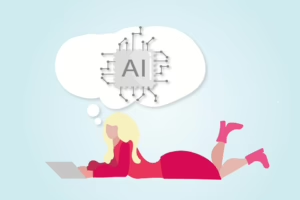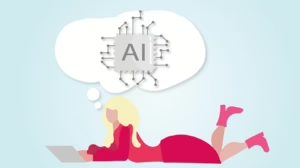What is AI? Breaking Down the Meaning of Artificial Intelligence
Introduction
Artificial Intelligence (AI) is a term that has permeated various industries, conversations, and even daily life. From smart assistants like Siri and Alexa to complex algorithms powering autonomous vehicles, AI technology has transformed how we interact with the world. Understanding what AI truly is and how it functions requires an exploration of its definitions, types, applications, and the ethical considerations associated with its use.
Defining Artificial Intelligence
AI can be broadly defined as the simulation of human intelligence processes by machines, particularly computer systems. These processes include learning (the acquisition of information and rules for using it), reasoning (using rules to reach approximate or definite conclusions), and self-correction. The term AI is often used interchangeably with machine learning (ML), but they are distinct. While ML is a subset of AI, focusing on systems that can learn from data and improve their performance, AI encompasses a wider range of technologies aimed at mimicking human cognitive functions.
Historical Context
The concept of AI is not new; it has roots that trace back to ancient myths and stories. However, the formal study of AI began in the 1950s, with pioneers like Alan Turing and John McCarthy laying the groundwork for future research. Turing introduced the idea of a machine that could demonstrate intelligent behavior, famously known as the Turing Test, which gauges a machine’s ability to exhibit intelligent behavior indistinguishable from that of a human. The Dartmouth Conference in 1956, organized by McCarthy, is often regarded as the birth of AI as a field of study. The researchers aimed to create machines that could simulate any aspect of human intelligence.
Types of AI
AI can be categorized into several types, primarily based on its capabilities and functionalities. Here are the main classifications:
-
Narrow AI (Weak AI): This type of AI is designed and trained for a specific task. Examples include facial recognition systems, recommendation algorithms, and chatbots. Narrow AI does not possess general intelligence and cannot perform tasks outside its predefined capabilities.
-
General AI (Strong AI): Unlike narrow AI, general AI refers to a machine capable of understanding, learning, and applying knowledge across a broad spectrum of tasks, much like a human. General AI remains largely theoretical and has not yet been realized.
-
Superintelligent AI: This theoretical concept posits a level of intelligence that surpasses human capabilities in virtually every field, including creative and problem-solving tasks. The implications of superintelligent AI raise significant ethical and existential questions.
Machine Learning: The Subset of AI
As mentioned earlier, machine learning is a subfield of AI that focuses on algorithms and statistical models that enable systems to improve through experience. Machine learning can be broadly classified into three types:
-
Supervised Learning: The algorithm is trained on labeled data, meaning the input and output are provided. For instance, in a spam detection system, emails are labeled as “spam” or “not spam.”
-
Unsupervised Learning: The algorithm is given unlabelled data and must find patterns or relationships within the data, such as clustering customers based on their purchasing behavior without prior knowledge of the groups.
-
Reinforcement Learning: In this paradigm, the algorithm learns by interacting with an environment and receiving feedback in forms of rewards or penalties. This is often used in robotics and game-playing scenarios.
Deep Learning: An Advanced Layer of Machine Learning
Deep learning, a specialized area within machine learning, utilizes neural networks with multiple layers (hence “deep”) to analyze various factors in data. This technique has been pivotal in advancements in image and speech recognition, natural language processing, and automated decision-making systems. The architecture of deep learning models mimics the human brain’s functioning, consisting of interconnected nodes (neurons) that process and relay information.
Applications of AI
The potential applications of AI span across numerous domains, revolutionizing industries and making significant impacts on everyday life. Here are some prominent sectors utilizing AI technologies:
Healthcare
AI is transforming healthcare by improving diagnostics, identifying treatment pathways, and personalizing patient care. Machine learning algorithms analyze medical imaging (X-rays, MRIs, etc.) to detect diseases more accurately and swiftly than humans. AI-powered wearables can monitor patient vitals in real time, alerting healthcare providers to potential issues before they escalate.
Finance
In the financial sector, AI algorithms manage risks and detect fraudulent transactions. Automated trading systems use AI to analyze market trends and execute trades at lightning speed. Additionally, personal finance applications provide tailored investment advice based on individual financial situations using AI analytics.
Transportation
The rise of autonomous vehicles showcases AI’s potential to reshape transportation. Companies like Tesla, Waymo, and others leverage AI technologies to develop self-driving cars that can navigate roads, adhere to traffic rules, and avoid obstacles, ultimately aiming to enhance road safety and reduce traffic congestion.
Retail
In retail, AI enhances customer experiences through personalized recommendations, chatbots for customer service, and predictive analytics to manage inventory. Retailers like Amazon utilize AI to analyze customer behavior, enabling them to suggest products that align with individual preferences.
Education
AI is shaping the educational landscape by offering personalized learning experiences. Intelligent tutoring systems can adapt content to suit individual learning styles and paces, while AI-driven analytics provide insights into student performance and areas for improvement.
Entertainment
In the entertainment industry, AI is employed in content creation, editing, and predictive analytics to enhance viewer experiences. Streaming platforms like Netflix use AI algorithms to recommend shows and movies based on viewing history.
Ethical Considerations
The rapid advancement and integration of AI into various facets of life raise critical ethical questions. Key concerns include:
Job Displacement
One of the most debated issues surrounding AI is its potential to displace jobs. While AI can streamline processes and improve efficiency, its implementation may lead to job loss in sectors reliant on repetitive tasks. It is essential to explore strategies to upskill and reskill the workforce to adapt to an AI-driven economy.
Privacy Concerns
AI systems often rely on vast amounts of data, including personal information. Ensuring the privacy and security of user data is paramount. Striking a balance between innovation and privacy protection is a challenge that policymakers, businesses, and technologists must address collectively.
Bias and Fairness
AI algorithms are trained on existing data, and if that data is biased, the outcomes can be discriminatory. This raises concerns about fairness in applications like hiring, lending, and law enforcement. It is crucial to develop more transparent and accountable AI systems to mitigate bias and ensure equitable outcomes.
Accountability and Transparency
As AI systems become more autonomous, questions arise about accountability when things go wrong. Establishing frameworks for understanding and regulating AI behavior is vital to prevent misuse and ensure that users can trust AI technologies.
Future of AI
The future of AI holds limitless potential. Advancements in quantum computing, neuroscience, and robotics may usher in a new era of AI capabilities that were previously unimagined. However, these advancements must be pursued responsibly, with a focus on ethical implications and societal impact.
Collaborative AI
The intersection of human and machine intelligence is gaining traction, with researchers exploring how AI can enhance human capabilities rather than replace them. Collaborative AI systems aim to complement human decision-making, generating solutions that leverage the strengths of both machines and humans.
Sustainable AI
As concerns about climate change and environmental sustainability grow, the development of energy-efficient AI models will become essential. Implementing sustainable practices in AI research and application can reduce the ecological footprint associated with computing resources.
Conclusion
Artificial Intelligence represents a monumental leap in technology, with vast implications across various sectors. By understanding its definitions, types, applications, and ethical considerations, individuals and organizations can harness AI’s potential while navigating the complexities that arise from its integration into daily life. As we stand on the brink of further advancements, the way we approach AI will play a crucial role in shaping the future, ensuring it serves humanity responsibly and ethically.
Footnotes
- Russell, S., & Norvig, P. (2021). Artificial Intelligence: A Modern Approach. Pearson.
- Kahneman, D. (2011). Thinking, Fast and Slow. Farrar, Straus and Giroux.
- Goodfellow, I., Bengio, Y., & Courville, A. (2016). Deep Learning. MIT Press.
- Russell, S. (2019). Human Compatible: Artificial Intelligence and the Problem of Control. Viking.
- Binns, R. (2018). “Fairness in Machine Learning: Lessons from Political Philosophy.” Proceedings of the 2018 Conference on Fairness, Accountability, and Transparency.
- Marr, B. (2020). Artificial Intelligence in Practice: How 50 Successful Companies Used AI and Machine Learning to Solve Problems. Wiley.
- Tegmark, M. (2017). Life 3.0: Being Human in the Age of Artificial Intelligence. Knopf.
- Chui, M., Manyika, J., & Miremadi, M. (2016). “Where machines could replace humans—and where they can’t (yet).” McKinsey Quarterly.
- McCarthy, J., et al. (1956). “A Proposal for the Dartmouth Summer Research Project on Artificial Intelligence.”
- Turing, A. M. (1950). “Computing Machinery and Intelligence.” Mind, 59, 433-460.
This content offers a comprehensive view of artificial intelligence, covering various essential topics for better understanding.


























Add Comment